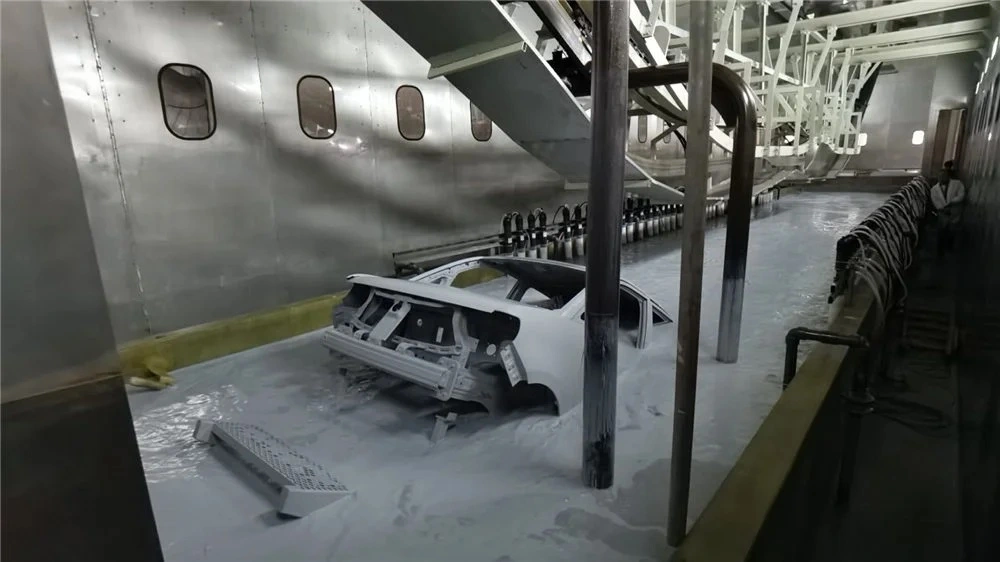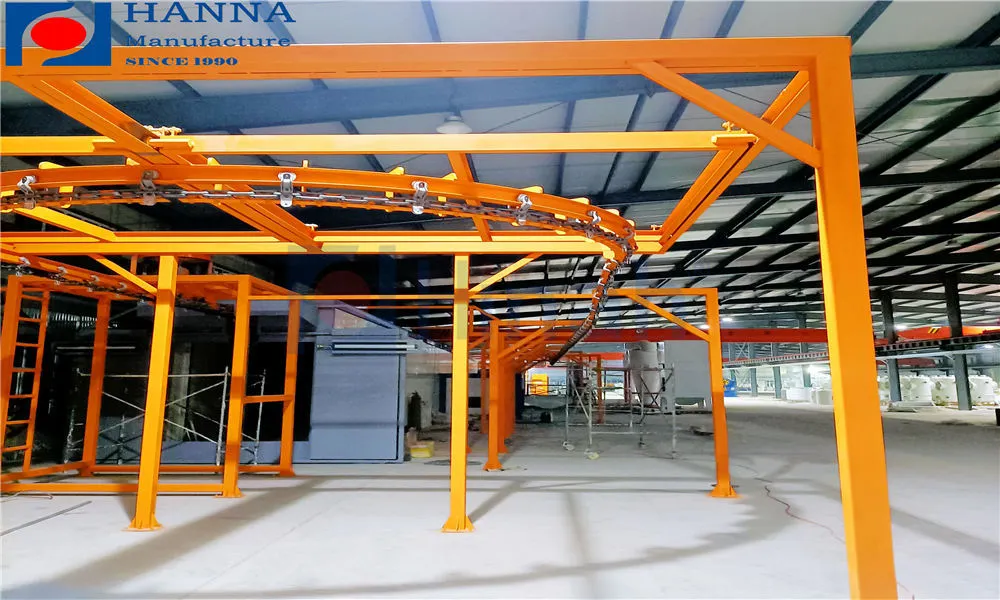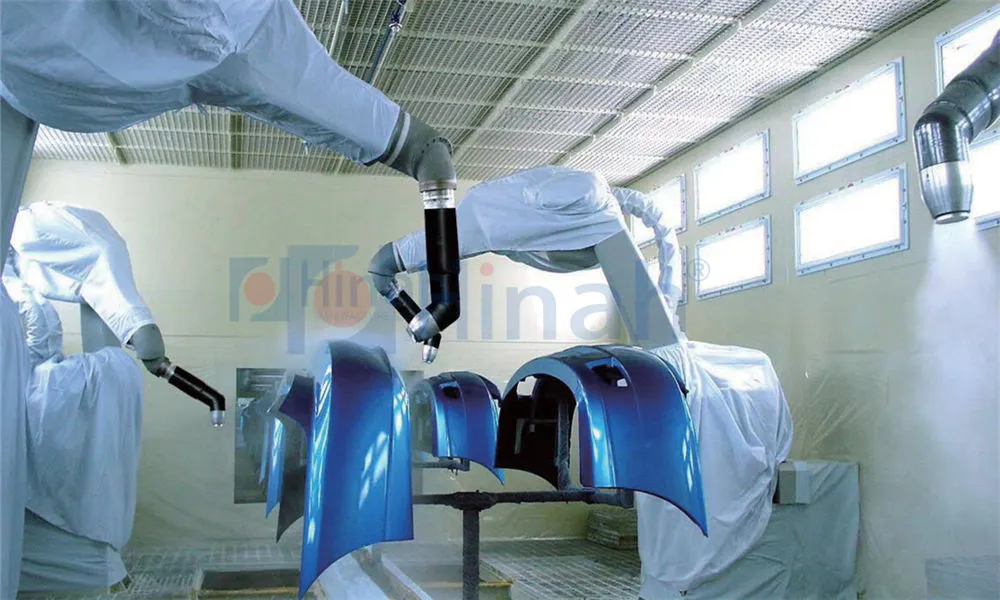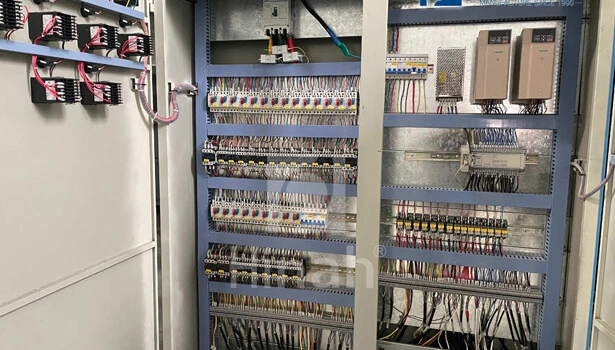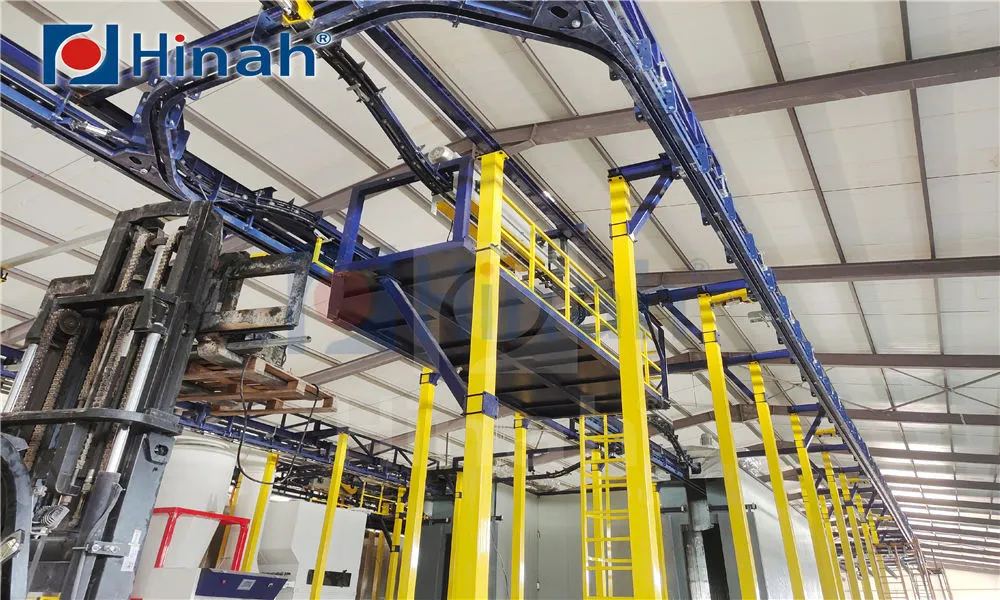The demand for durable, high-quality, and environmentally friendly finishing solutions has propelled powder coating to the forefront of industrial and commercial applications. At the heart of this process lies the powder coating plant, a sophisticated system integrating various technologies to apply and cure powdered paint onto diverse substrates. Whether you're scaling up production, starting a new venture, or seeking local services, understanding the components and options of a powder coating plant is crucial. This comprehensive guide explores everything from powder coating machine types to finding powder coating near me.

What is a Powder Coating Plant?
A powder coating plant is a complete, integrated facility designed for the powder coating process. It goes beyond a single machine, encompassing several key stages and components working in unison:
Pre-treatment: Cleaning and preparing the metal surface (e.g., degreasing, phosphating) to ensure optimal adhesion.
Powder Application: Using a powder coating machine (spray gun) to apply the electrostatically charged powder paint.
Curing: Baking the coated parts in a powder coating oven to melt and flow the powder into a smooth, durable finish.
Material Handling: Conveyors or manual systems to transport parts through each stage.
Powder Recovery & Reclaim: Systems (like filters and cyclones) to collect overspray powder for reuse, maximizing efficiency and minimizing waste.
A well-designed powder coating plant ensures consistent quality, high throughput, and operational efficiency.
Exploring Powder Coating Plant Components
1. The Core: Powder Coating Machines
The powder coating machine, specifically the spray gun, is the workhorse of the application stage. Key types include:
Corona Guns: The most common type, using a high-voltage electrode to charge the powder as it exits the gun. Excellent for complex geometries.
Tribo Guns: Charge powder through friction inside the gun barrel. Ideal for recessed areas and reduces the "Faraday cage" effect. Often preferred for certain powder coating paint types.
Powder Coating Machine Small: Perfect for low-volume shops, hobbyists, prototyping, or touch-up work. These compact units are often manual and may integrate a small powder feed system. Searching for a powder coating machine small is common for startups or specialized applications.
Automatic Powder Coating Machine: Designed for high-volume production lines. These systems feature robotic arms or reciprocators programmed to follow precise paths, ensuring consistent application and maximizing efficiency. Investing in an automatic powder coating machine significantly boosts output and reduces labor costs.
2. The Finishing Touch: Powder Coating Ovens
Curing is essential for the powder to achieve its full properties. Ovens come in various configurations:
Convection Ovens: Use heated air circulated by fans for uniform heat distribution. The most common type for general industrial use.
Infrared (IR) Ovens: Use electromagnetic radiation to heat the part surface directly, offering faster cure times and potentially lower energy consumption. Ideal for thin-gauge metals.
Electric Powder Coating Oven: Heated solely by electric elements. Often simpler to install and control, making them popular for smaller powder coating plant setups, clean rooms, or locations without easy gas access. An electric powder coating oven provides precise temperature management.
Gas-Fired Ovens: Typically use natural gas or propane. Often more cost-effective to operate for large, high-throughput plants, though installation can be more complex.
Oven size and type depend on part dimensions, production volume, and the specific powder coating paint cure schedule.
3. The Foundation: Powder Coating Paint
The powder coating paint itself is a finely ground mixture of polymer resins, pigments, curatives, and additives. Key types include:
Thermosetting Powders: Epoxy, Polyester, Epoxy-Polyester Hybrids, Polyurethane, Acrylic. Cure through an irreversible chemical reaction when heated, creating a tough, cross-linked finish. Most common type.
Thermoplastic Powders: Nylon, PVC, Polyolefin. Melt and flow when heated but revert upon re-heating. Used for specific functional applications like wire baskets.
Specialty Powders: Textured, Metallic, Fluorescent, Anti-graffiti, Low-cure, and primers.
Selecting the right powder coating paint is critical for achieving the desired appearance, durability (weather resistance, chemical resistance, abrasion resistance), and functionality.
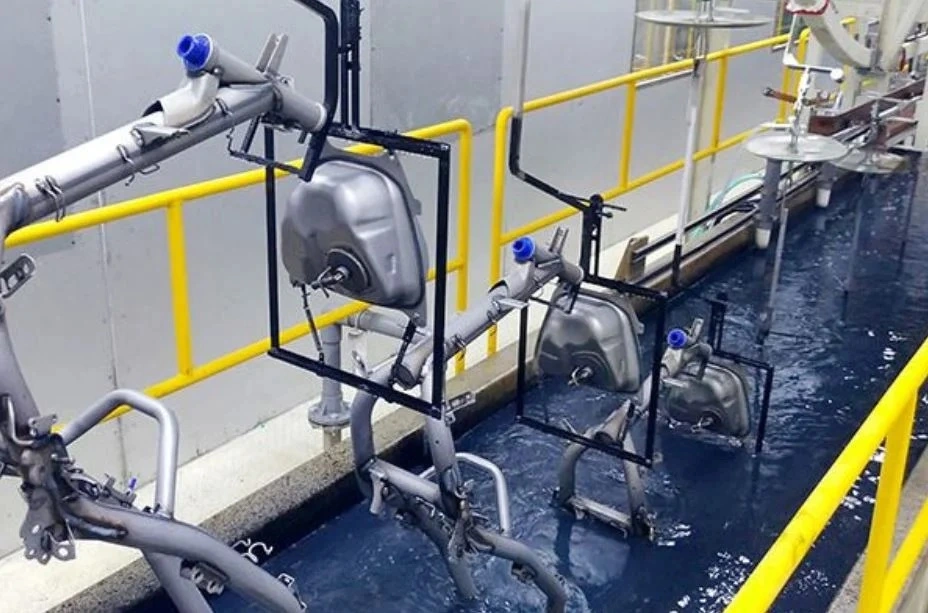
Finding Your Powder Coating Solution
1. Powder Coating Plant for Sale
The market offers diverse options when seeking a powder coating plant for sale:
New Systems: Custom-engineered or standard modular plants from manufacturers. Offer the latest technology, warranties, and tailored design.
Used/Refurbished Systems: A cost-effective entry point. Thoroughly inspect equipment condition, maintenance history, and compatibility with your needs. Many suppliers specialize in powder coating plant for sale on the secondary market.
Modular Plants: Pre-engineered sections for pretreatment, application booths, and ovens that can be assembled on-site. Faster installation than fully custom builds.
Powder Coating Shipping Container: An innovative solution for space constraints or mobility. Companies convert standard shipping containers into self-contained powder coating plant units, often including pretreatment, application booth, recovery, and a compact oven. A powder coating shipping container is ideal for job shops needing flexibility, field operations, or startups with limited real estate.
2. Powder Coating Near Me
Not everyone needs to own a plant. Many businesses and individuals require professional coating services. Searching "powder coating near me" is common for:
Job Shops: Businesses specializing in coating customer parts.
Prototype & Low-Volume Coaters: Ideal for small batches or R&D.
Industrial Coaters: Often part of larger manufacturing facilities offering overflow capacity.
Specialized Finishers: Focusing on specific materials or finishes (e.g., architectural, automotive).
Utilizing local powder coating near me services avoids capital investment and leverages expert application.
3. Starting Small: The Powder Coating Set
For beginners, hobbyists, or very low-volume applications, a complete powder coating set provides an accessible entry point. A typical set includes:
A small powder coating machine (gun) - often a basic Corona gun.
A powder feed hopper (cup or small fluidized bed).
A high-voltage power supply/control unit.
Basic accessories (grounding clamp, spare nozzles).
Sometimes: A small batch electric powder coating oven or instructions for using a conventional oven (with strict safety caveats).
A powder coating set allows learning the fundamentals and handling small projects economically.
Key Considerations When Setting Up or Buying
Production Volume & Part Size: Dictates plant size, conveyor type, booth dimensions, and oven capacity.
Part Geometry & Complexity: Influences gun type (Corona vs. Tribo), booth airflow design, and need for manual vs. automatic powder coating machine application.
Material Types: Primarily metals, but plastics and MDF require specific pretreatment and powder types.
Finish Requirements: Color, gloss, texture, and durability needs impact powder coating paint selection and process control.
Space & Layout: Critical for workflow efficiency and safety compliance. Consider ceiling height, door access, and utility locations (compressed air, power, exhaust).
Budget: Includes equipment cost (powder coating plant for sale price, powder coating machine small vs. automatic), installation, utilities, powder coating paint, and ongoing maintenance.
Environmental & Safety Regulations: Strict regulations govern air emissions (VOCs are minimal, but particulates matter), waste disposal (pretreatment sludge, spent powder), and operator safety (respiratory protection, explosion protection - especially in the powder coating oven and recovery areas). Compliance is non-negotiable.
Automation Level: Balance between labor costs, desired throughput, and consistency. An automatic powder coating machine requires higher upfront cost but offers long-term efficiency.
Benefits of a Modern Powder Coating Plant
Investing in a well-designed powder coating plant offers significant advantages:
Superior Durability: Highly resistant to chipping, scratching, fading, and corrosion.
Exceptional Finish Quality: Smooth, uniform, and attractive finishes in limitless colors and textures.
Environmental Friendliness: Contains no solvents (VOCs), produces minimal hazardous waste, and overspray can be reclaimed (up to 95%+ transfer efficiency).
Economic Efficiency: High material utilization, reduced energy costs (compared to liquid curing), lower waste disposal costs, and minimal rework.
Operational Efficiency: Fast production cycles, especially with IR curing or automatic powder coating machine systems. Streamlined workflow in a complete plant.
Versatility: Capable of coating a vast array of metal products – from automotive wheels and bicycle frames to office furniture, appliances, and building facades.
Whether you are an industrial manufacturer seeking a high-throughput powder coating plant for sale with automatic powder coating machine lines and large curing ovens, a job shop considering a versatile powder coating shipping container solution, a craftsman needing a powder coating machine small setup, or simply a customer searching for reliable powder coating near me, the powder coating industry offers tailored solutions.
Understanding the core components – the powder coating machine, the critical powder coating oven (including the efficient electric powder coating oven), and the diverse range of powder coating paint – is fundamental. For those embarking on a DIY journey, a starter powder coating set provides a practical entry point. By carefully evaluating your specific needs regarding volume, part size, finish requirements, budget, and space, you can implement a powder coating solution that delivers outstanding quality, efficiency, and durability for years to come. The versatility and benefits of modern powder coating make it an indispensable finishing technology across countless industries.
FAQ
➤What is a powder coating plant?
A powder coating plant is an industrial facility specifically designed and equipped to apply powder coating finishes to various objects (substrates). It houses the necessary infrastructure and equipment for the entire powder coating process, including pre-treatment stages (cleaning, rinsing, chemical conversion coating), drying, powder application (typically using electrostatic spray guns in a booth), curing ovens, and post-curing cooling areas. Environmental control systems for air filtration and ventilation are also crucial components.
➤What industry does powder coating belong to?
Powder coating belongs primarily to the Industrial Manufacturing sector, specifically within the Surface Finishing or Industrial Coating industry. It serves as a key process technology across numerous downstream industries including:
Automotive & Transportation (wheels, bumpers, engine parts, bicycles, trailers, agricultural equipment)
Appliances (ovens, refrigerators, washer/dryers, dishwasher racks)
Architecture & Building Products (window frames, door frames, fencing, aluminium extrusions, facades, fixtures)
Furniture (office furniture, garden furniture, shelving)
Consumer Goods (electronics enclosures, lighting fixtures, sporting goods, tools)
General Industrial (machinery, storage racks, pipes, valves, electrical enclosures)
➤What is the purpose of powder coating?
The primary purposes of powder coating are:
Protection: To provide a highly durable, corrosion-resistant, and chip-resistant barrier that protects the underlying metal (or sometimes other materials) from environmental damage, chemicals, moisture, and UV degradation.
Decoration/Aesthetics: To provide an attractive, high-quality finish with a wide range of colors, textures (e.g., smooth, wrinkled, matte, glossy, metallic), and effects.
Durability: To create a finish that is significantly tougher, more flexible, and longer-lasting than many conventional liquid paints.
Environmental & Safety Benefits: To use a coating process that emits negligible VOCs (Volatile Organic Compounds), allows for efficient material usage (overspray can often be recycled), and reduces fire hazard compared to solvent-based paints.
➤Can powder coating be removed?
Yes, powder coating can be removed, but it is generally much more difficult and requires more aggressive methods than removing traditional liquid paint. Common removal techniques include:
Chemical Stripping: Using strong, heated alkaline or acidic stripping solutions to dissolve the coating. Requires careful handling and disposal.
Abrasive Blasting: Using media like sand, plastic beads, soda, or dry ice propelled at high pressure to physically abrade the coating off the surface. Effectiveness depends on the media, pressure, substrate hardness, and coating thickness/type.
Thermal Methods: Burning the coating off in a high-temperature oven (pyrolysis). Primarily used for reclaiming metal parts and requires specialized, high-energy equipment.
Mechanical Methods: Grinding or sanding. Labor-intensive and suitable only for small areas or specific applications.
The choice of removal method depends heavily on the substrate material, the type of powder coating, the desired surface finish after removal, environmental considerations, and cost.


